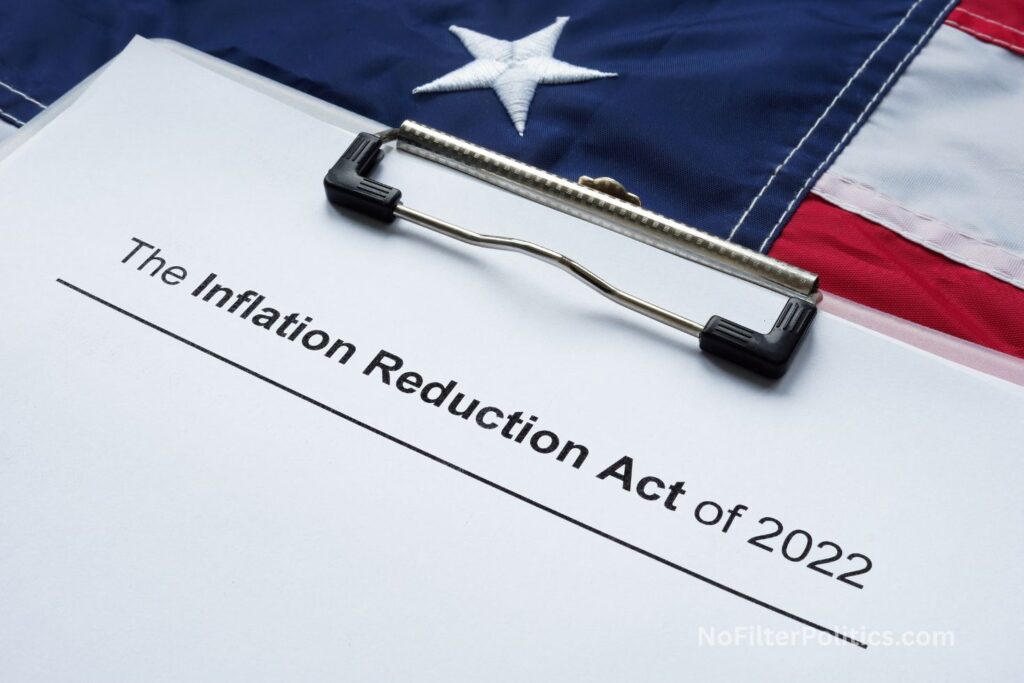Who’s Getting Rich Off Going Green? The Hidden Empire of Climate Capitalism
For decades, the phrase “saving the planet” has been framed as an act of sacrifice — use less, spend less, expect less. But somewhere between the Kyoto Protocol and the Inflation Reduction Act, a new reality emerged: saving the planet became a business model. From ESG investing and green subsidies to the rise of eco-influencers, a multitrillion-dollar ecosystem now feeds off the global demand for sustainability. It promises environmental virtue but often delivers financial opportunity. This is the story of climate capitalism — who built it, who profits, and why it might shape the next 50 years of the world economy.
From Ethics to Economics: The Birth of ESG

The roots of modern ESG investing stretch back to the moral investment movements of the 1970s and 1980s, when investors began excluding tobacco companies, weapons manufacturers, and apartheid-linked businesses from their portfolios. These were values-based decisions, not financial strategies. By the late 1990s, however, a shift was underway. Investors and economists began asking whether environmental, social, and governance factors — known collectively as ESG — could also predict financial performance.
In 2004, the United Nations published a report titled Who Cares Wins, arguing that companies integrating ESG principles were better long-term bets. Two years later, the UN launched the Principles for Responsible Investment, a voluntary framework that allowed major institutions to pledge allegiance to sustainable investing without giving up returns. The idea caught on fast.
Between 2016 and 2020, global ESG assets jumped from $22.8 trillion to $35 trillion, according to Bloomberg Intelligence. By 2025, that figure was projected to top $50 trillion — more than one-third of all assets under management worldwide. ESG had moved from the margins to the mainstream, driven by three powerful forces: government policy, corporate branding, and investor demand.
In Europe, regulators codified the movement into law. The European Union’s Sustainable Finance Disclosure Regulation (SFDR) and taxonomy created an official rulebook for what counts as “sustainable.” In the United States, adoption was looser but rapid — asset managers launched ESG-branded funds, pension boards demanded green metrics, and shareholder activism surged.
At its core, ESG investing turned morality into a product. It translated complex global goals — climate action, gender equity, governance reform — into numerical ratings and fund labels. Investors could now “do good” without leaving the market. But as the money poured in, the cracks began to show.
The Rise of the ESG Industry

The first to cash in on the movement weren’t investors or companies — they were data vendors. Firms like MSCI, Sustainalytics, and S&P Global developed proprietary ESG rating systems that turned environmental virtue into measurable scores. Corporations subscribed to access their rankings and investors paid to license ESG indices. The data wasn’t free, and neither was the influence it carried.
MSCI’s ESG and Climate division became one of its fastest-growing businesses, with revenue more than doubling between 2020 and 2022. Sustainalytics, owned by Morningstar, and Moody’s ESG Solutions followed suit. These firms positioned themselves as the gatekeepers of sustainability, controlling the algorithms that determined which companies made it into ESG funds.
For accounting firms and consultants, ESG was equally lucrative. The Big Four — Deloitte, PwC, EY, and KPMG — built entire divisions around sustainability reporting and assurance. As Europe’s Corporate Sustainability Reporting Directive (CSRD) and global ISSB standards rolled out, companies were required to verify their ESG data with independent auditors. Every new rule created new billable hours.
Law firms and investment advisors joined the parade. Legal practices opened ESG compliance departments, advising companies on disclosure rules and helping asset managers market their funds safely. Investment advisors created “green portfolios” for clients, often charging higher management fees for strategies that looked remarkably similar to traditional ones.
Meanwhile, banks and underwriters found fresh demand in the bond market. “Green bonds” and “sustainability-linked loans” became the hot products of the 2020s, allowing corporations to borrow money at lower interest rates if they hit environmental targets. By 2024, global issuance of green-labeled debt had surpassed one trillion dollars in a single year.
The result was an entire climate services economy built on compliance, assurance, and storytelling. ESG didn’t just create new ways to invest — it created new professions, new billing codes, and new dependencies. The data and consulting arms of ESG were insulated from market volatility. Even when investors pulled money out of ESG funds, companies still needed audits, ratings, and reports. The movement had become self-sustaining.
The Backlash and the Reality Check

By the early 2020s, ESG investing faced its first real test. As energy prices spiked and oil stocks surged, many ESG funds underperformed, exposing the limits of moral screening. Critics accused asset managers of using ESG as a marketing gimmick to charge higher fees without delivering impact.
The U.S. Securities and Exchange Commission began cracking down on greenwashing, fining asset managers that exaggerated the sustainability of their funds. In Germany, Deutsche Bank’s DWS unit paid millions to settle claims that it misrepresented its ESG credentials. Regulators across the world started asking hard questions: What does “sustainable” actually mean? Who verifies these claims?
At the same time, ESG became a political lightning rod in the United States. Conservative lawmakers in states like Texas and Florida accused large asset managers of promoting “woke capitalism” by boycotting fossil fuels. Some states banned ESG criteria from public pension investments, while others embraced them as a fiduciary duty. By 2023, the same acronym — ESG — was either a badge of progress or a target of derision, depending on which side of the aisle you asked.
Even as U.S. politics fractured, global standards marched forward. The International Sustainability Standards Board (ISSB) introduced universal disclosure frameworks. Europe mandated climate reporting under its CSRD, covering tens of thousands of companies worldwide. Whether American regulators advanced or retreated, U.S. corporations still had to comply to access global capital markets.
The financial machinery of ESG remained intact, but the illusion of simplicity was gone. What began as an ethical compass had evolved into a complex regulatory labyrinth — one that rewarded those who could navigate it.
The Industrial Revolution 2.0: Green Subsidies and the Inflation Reduction Act

While Wall Street monetized data and definitions, Washington built an entire green economy around tax credits. The 2022 Inflation Reduction Act (IRA) marked the largest climate investment in U.S. history, with roughly $369 billion in incentives for clean energy and manufacturing.
Unlike traditional spending bills, the IRA didn’t rely on grants alone. Its real innovation was transferable and refundable tax credits. Under Section 6417 of the Internal Revenue Code, known as “Direct Pay,” tax-exempt entities like local governments, nonprofits, and cooperatives could receive cash payments from the Treasury for building clean energy projects. For the first time, a city could install solar panels on a school and get a check instead of a deduction.
Section 6418 introduced transferability. Businesses could now sell unused tax credits to other taxpayers for cash. A developer without enough tax liability to use the credit could sell it to a profitable corporation — creating an entirely new financial marketplace. By 2024, analysts estimated that more than $30 billion worth of credits had changed hands through these transactions.
The impact was immediate. Renewable energy developers could secure funding more easily, manufacturers rushed to build factories on U.S. soil, and even nonprofits could join the green boom. Battery makers qualified for $35 per kilowatt-hour of domestic production, while clean hydrogen producers could earn up to $3 per kilogram under Section 45V. Carbon capture projects received $85 per ton of carbon dioxide stored under Section 45Q.
The winners were clear.
Manufacturers—especially those producing solar panels, batteries, wind turbines, and critical minerals—saw an influx of investment. Project developers gained liquidity, no longer dependent on the handful of big banks that dominated tax-equity finance. Corporations with large tax bills bought credits at a discount to reduce their liabilities. Financial institutions and law firms created new divisions to structure, audit, and trade credits. Even local governments and nonprofits could finally build and benefit from renewable infrastructure.
In essence, the IRA turned climate policy into a public-private partnership engine. It offered a carrot instead of a stick, using the tax code to steer capital instead of mandates.
But it also sparked a global subsidy race. The European Union, Canada, and Japan scrambled to roll out their own incentive packages to prevent green industries from relocating to the United States. Europe’s Net-Zero Industry Act loosened state aid rules, while Canada mirrored many U.S. tax credits. Within two years, what began as a climate bill had evolved into an international competition for green manufacturing dominance.
Critics warned of inefficiency and moral hazard. Some corporations would collect subsidies for projects they planned to build anyway. Others might exploit loopholes by reclassifying existing operations as “clean.” Still, the law’s defenders argued that scale and speed mattered more than purity. To decarbonize at the pace scientists recommend, money had to move fast — and nothing moves capital like profit.
The New Climate Class: Who Benefits from Subsidies

Every subsidy has its hierarchy of winners. At the top sit the companies producing the building blocks of the green transition: solar panels, batteries, electric vehicles, and hydrogen. Firms like Tesla, First Solar, and NextEra Energy stand to collect billions in credits over the next decade. Legacy manufacturers like General Motors and Ford are cashing in as well, leveraging EV credits to offset transition costs.
Below them are developers and utilities. Solar farms, wind projects, and storage facilities have become hot properties, backed by credits that can cover up to half the total cost when all adders — for domestic content, energy communities, and labor standards — are applied.
Then come the financiers. Investment banks and private equity firms are structuring credit transfer deals, effectively turning tax credits into a new class of tradeable assets. Specialized brokers pair sellers and buyers, taking a cut of each transaction.
Finally, there’s a new category of beneficiaries: public and nonprofit entities. Before the IRA, these groups couldn’t benefit from tax credits at all. Now, they can tap direct pay to fund everything from school solar projects to electric bus fleets. It’s a rare case where government and business incentives align.
But there are shadows too. Subsidy markets attract arbitrage. Some companies reconfigure projects to maximize credits rather than efficiency. Others stack incentives across programs, effectively double-dipping. Oversight will be critical to ensure the law achieves its environmental goals rather than becoming another corporate entitlement.
The Culture of Green: Eco-Influencers and the Sustainability Economy

If Wall Street monetized climate data and Washington monetized policy, social media monetized climate culture. The rise of eco-influencers — sometimes called “greenfluencers” — has turned sustainability into one of the fastest-growing niches in the creator economy.
On TikTok, the hashtag #Sustainability has amassed billions of views. Instagram is filled with zero-waste tips, slow fashion lookbooks, and videos of influencers showing off electric vehicles or solar-powered gadgets. YouTube hosts long-form explainers and documentaries about clean energy, minimalism, and climate anxiety.
These creators profit the same way other influencers do — through sponsorships, affiliate links, ad revenue, and product sales — but they trade on authenticity. Their audience expects more than entertainment; it expects integrity. The most successful eco-influencers build communities around shared values, not just products.
Brands, sensing the power of this connection, have poured marketing budgets into the sustainability space. Green-focused creators now promote everything from refillable beauty products to carbon-neutral travel packages. When a popular reality show in the U.K. switched its fashion sponsor to a secondhand retailer, it triggered a 1,400 percent spike in related searches overnight.
This democratized sustainability — but it also blurred the line between education and advertising. As the money grew, so did the risk of greenwashing.
Regulators have begun to respond. The U.S. Federal Trade Commission is updating its Green Guides to clarify environmental marketing rules. The U.K.’s Advertising Standards Authority has already banned misleading “eco” ads and called out influencers for vague claims. The European Union is preparing a Green Claims Directive to require proof for any sustainability claim made in marketing.
Influencers themselves are adapting. Many now disclose sponsorships more clearly, avoid absolute terms like “100% sustainable,” and demand evidence from brands before signing deals. In a sense, the influencer market is maturing faster than some corporate ESG reporting systems.
Still, the incentives are tricky. Positivity and aesthetics drive engagement, while nuanced discussions of carbon accounting rarely go viral. Some creators find that doom-and-gloom content performs better, rewarding fear over facts. Others feel pressure to stay “on brand,” even when real-world solutions are messy or expensive.
The eco-influencer economy represents both a cultural shift and a new form of economic activity. It turns awareness into income — a phenomenon that can either accelerate change or trivialize it, depending on how responsibly it’s used.
Stakeholders in Climate Capitalism

The ecosystem of climate capitalism is sprawling, but its logic is simple: where complexity exists, profit follows.
Asset Managers and Investors monetize climate through fees. They create ESG products, gather assets, and collect percentages. Even when performance lags, the management fees keep flowing.
Corporations convert sustainability into competitive advantage. They issue green bonds, capture subsidies, and enhance brand value by positioning themselves as climate leaders.
Data Providers, Auditors, and Consultants thrive on compliance complexity. Every new rule means new contracts. Their incentive is clarity for clients but opacity in the marketplace — a tension that regulators are only beginning to address.
Governments trade fiscal cost for political and environmental gain. Subsidies create jobs and technology leadership, but also budget risk and lobbying pressure. States and nations compete to host factories, sometimes offering more in credits than they recover in taxes.
Nonprofits and NGOs gain access to funding and influence. Many serve as validators in the ESG world, offering certifications, research, or partnerships that corporations use to bolster credibility.
Influencers and Creators monetize attention. They humanize sustainability and educate audiences, but also turn environmental identity into lifestyle content. The best among them use their platforms to drive behavior change; the worst dilute the message into trend cycles.
Each group operates under the same economic law: if there’s a system, someone will learn to monetize it. The question is whether the profit reinforces or undermines the intended social goal.
The Fragile Currency of Trust

The entire structure of climate capitalism rests on trust — trust that ESG funds reflect genuine performance, that subsidies deliver genuine innovation, that influencers promote genuine solutions. Lose that trust, and the movement collapses under its own contradictions.
Greenwashing scandals have already dented investor confidence. Subsidy misuse could spark taxpayer backlash. Overcommercialized activism risks alienating audiences. Yet, if properly managed, the convergence of finance, policy, and culture could accelerate the decarbonization process faster than regulation alone ever could.
The line between cynicism and pragmatism is thin. Critics see opportunism; optimists see alignment. In truth, both are right. Capitalism adapts — it always finds profit in the prevailing winds. The challenge for the 2020s and beyond is to channel that profit toward real outcomes rather than hollow virtue.
That means standardizing ESG metrics to prevent score manipulation, auditing subsidy recipients to ensure accountability, and demanding transparency from online advocates. It means rewarding measurable reductions in emissions, not just marketing campaigns about them.
It also means acknowledging that the green transition will create winners and losers. Fossil fuel workers displaced by renewables, communities competing for factories, and taxpayers underwriting industrial policy all deserve a place in the conversation. Economic transitions aren’t free, and neither are the incentives that drive them.
The Road Ahead: From Branding to Building
From the 1990s ethical fund manager to the 2020s TikTok activist, the sustainability narrative has evolved from moral idealism to mainstream economics. ESG investing, green subsidies, and digital advocacy are now pillars of a vast new marketplace — one that channels trillions toward the climate cause, but not always toward the climate solution.
The coming decade will determine whether “climate capitalism” becomes a bridge or a detour. If capital markets, public policy, and culture continue to converge on measurable progress — cleaner grids, smarter infrastructure, resilient supply chains — then the profit motive will have served a noble purpose. But if these systems remain dominated by consultants, compliance costs, and performative marketing, they’ll be remembered as one more speculative bubble inflated by good intentions.
The irony of climate capitalism is that it relies on the very forces that created the crisis — consumption, ambition, and competition — to solve it. Whether that alchemy works depends on how well society can align money with mission, profit with purpose, and image with impact.
For now, one thing is certain: climate capitalism is not a dream of the future. It’s already here, quietly reshaping industries, economies, and the moral language of money. And like every other revolution in capitalism, the rewards will not be distributed evenly.
The planet’s fate, and perhaps its fortune, may hinge on who controls the cash flow of conscience — and whether the new green economy can finally make doing good pay off for everyone, not just the few.
References
- Berg, Florian, Julian F. Kölbel, and Roberto Rigobon. “Aggregate Confusion: The Divergence of ESG Ratings.” Review of Finance 26, no. 6 (2022): 1315–1355. https://academic.oup.com/rof/article/26/6/1315/6590670
- Deloitte. “The Creator Economy in 3D.” Deloitte US, 2025. https://www.deloitte.com/us/en/programs/chief-marketing-officer/articles/content-creator-economy.html
- Exploding Topics. “Creator Economy Market Size (2025–2030).” Published 2024. https://explodingtopics.com/blog/creator-economy-market-size
- Federal Register. “Transfer of Certain Credits.” Federal Register 89, no. 84 (April 30, 2024). https://www.federalregister.gov/documents/2024/04/30/2024-08926/transfer-of-certain-credits
- Harvard Law School Forum on Corporate Governance. “ESG Ratings: A Compass without Direction.” August 24, 2022. https://corpgov.law.harvard.edu/2022/08/24/esg-ratings-a-compass-without-direction/
- Holland & Knight. “Section 6418: What’s New in the Final Inflation Reduction Act.” May 2024. https://www.hklaw.com/en/insights/publications/2024/05/section-6418-whats-new-in-the-final-inflation-reduction-act
- Influencer Marketing Hub. “Creator Earnings Report 2025.” Published 2025. https://influencermarketinghub.com/creator-earnings-report-2025/
- International Energy Agency. World Energy Investment 2025 – Analysis. Published 2025. https://www.iea.org/reports/world-energy-investment-2025
- Internal Revenue Service. “Elective Pay and Transferability.” Updated July 2024. https://www.irs.gov/credits-deductions/elective-pay-and-transferability
- ———. “Elective Pay and Transferability Frequently Asked Questions.” Updated April 25, 2024. https://www.irs.gov/credits-deductions/elective-pay-and-transferability-frequently-asked-questions-transferability
- KPMG. “Final Regulations: Guidance on Transfer of Certain Tax Credits under IRA.” TaxNewsFlash, April 25, 2024. https://assets.kpmg.com/content/dam/kpmg/us/pdf/2024/04/24154.pdf
- MIT Sloan Sustainability Initiative. “The Aggregate Confusion Project.” Accessed November 2025. https://mitsloan.mit.edu/sustainability-initiative/aggregate-confusion-project
- Mitchell, Williams, Selig, Gates & Woodyard, P.L.L.C. “Transferability of Energy Credits under the Inflation Reduction Act: What Do You Need to Know.” 2024. https://www.mitchellwilliamslaw.com/transferability-of-energy-credits-under-the-inflation-reduction-act-what-do-you-need-to-know
- Morningstar. “ESG | Morningstar Indexes.” Published 2025. https://indexes.morningstar.com/esg
- ———. “Global Sustainable Fund Flows: Q2 2025 in Review.” Morningstar, July 29, 2025. https://www.morningstar.com/business/insights/blog/funds/global-sustainable-fund-flows-quarterly-data
- U.S. Department of the Treasury. “U.S. Department of the Treasury Releases Final Rules to Expand Access to Clean Energy Tax Credits.” November 19, 2024. https://home.treasury.gov/news/press-releases/jy2718
- Zerfass, Ansgar, and Dejan Verčič. “Quantitative ESG Disclosure and Divergence of ESG Ratings.” Frontiers in Psychology 13 (2022). https://www.frontiersin.org/articles/10.3389/fpsyg.2022.936798/full
Discover more from Timothy Alexander
Subscribe to get the latest posts sent to your email.